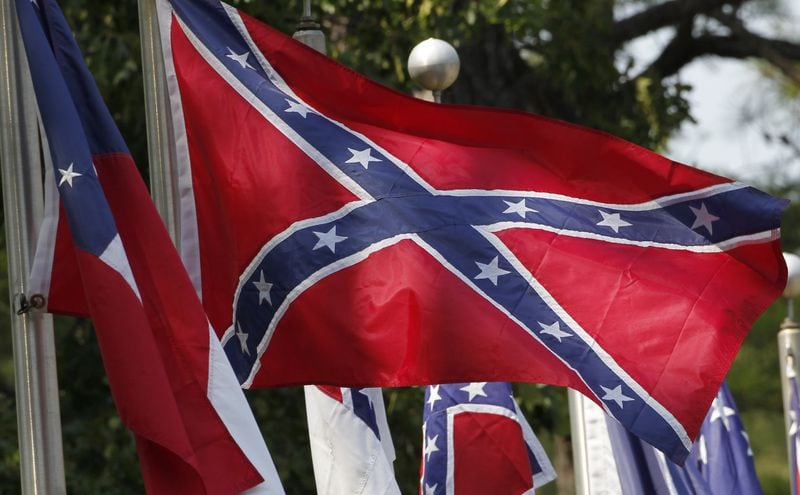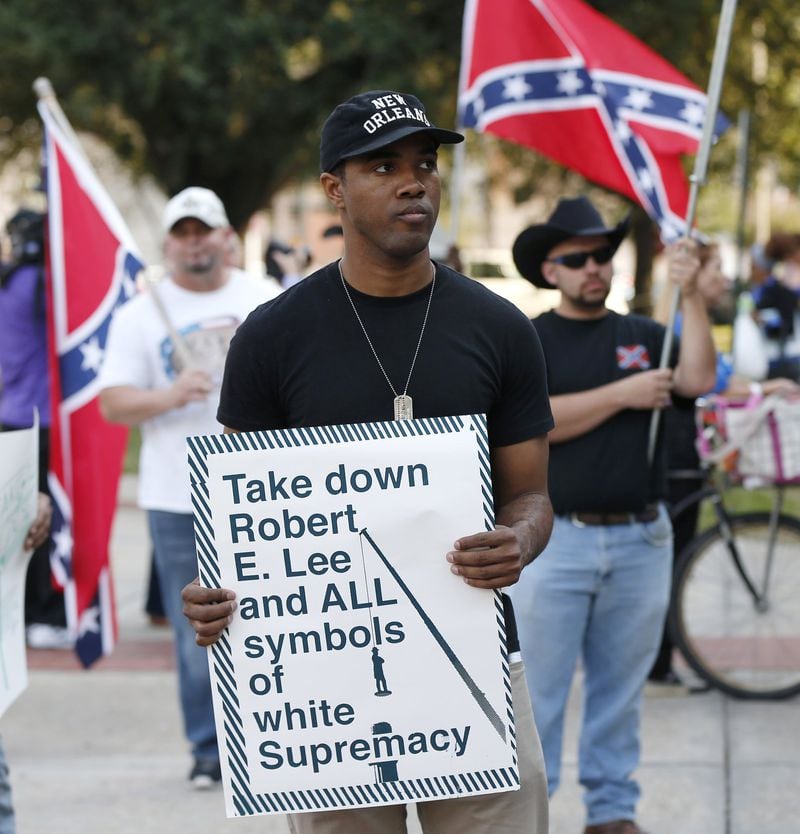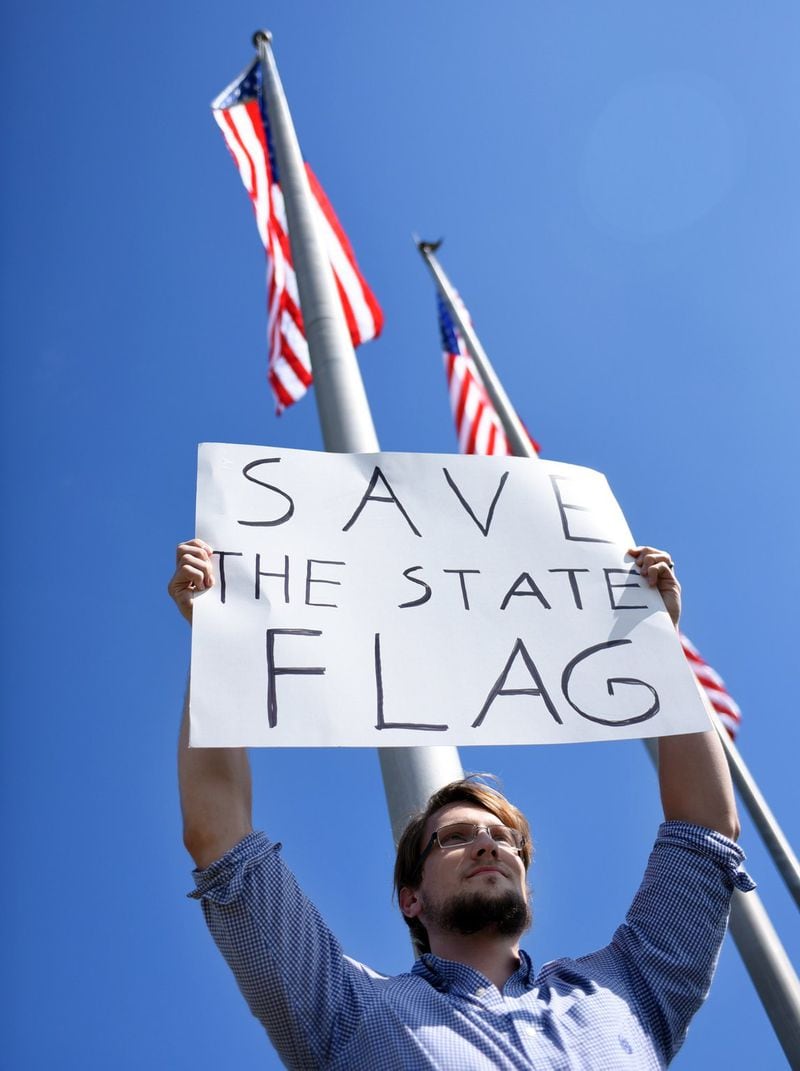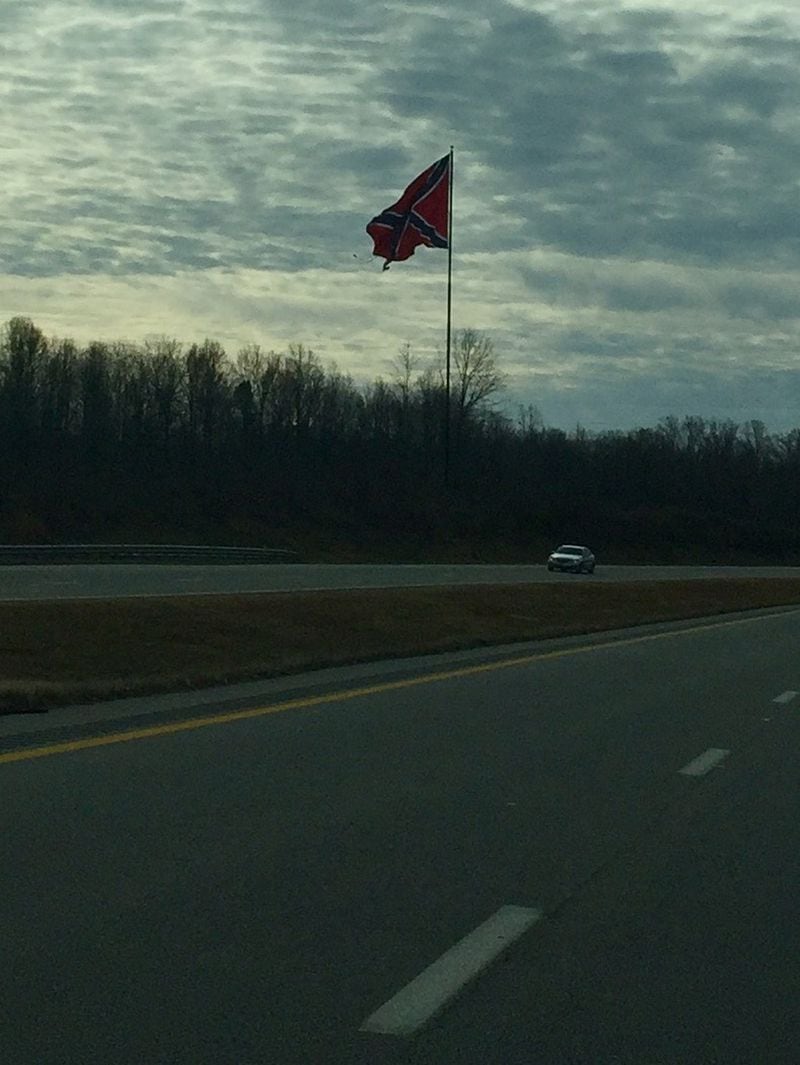As a federal jury this week decides whether Dylann Roof should get the death penalty for his massacre of nine African American churchgoers in Charleston, the rest of the South is still grappling with one contentious symbol that Roof embraced.
» Photos: Confederate memorials in metro Atlanta
» Confederate memorials at the state Capitol
Photos which emerged showing Roof posing with the Confederate battle flag in the months leading up to the killings left little doubt about the gunman’s motivation. Both Alabama and South Carolina hauled down their own emblems from state Capitol grounds. And pressure grew to eliminate Confederate iconography from other public places.
Now, more than 18 months later, as Roof waits to see whether he may one day be executed for his crimes, the national and statewide momentum to remove the Confederate flag from public spheres has slowed, although local efforts continue. It’s a natural ebb and flow that happens after any major flash point moment, observers say. But for the South, the dispute over Civil War symbols never quite seems to abate.
» The other Southern heritage: Slavery in Georgia
“As tragic as the shooting was, it opened up a moment in which important things can happen but those windows can close and we can reach a point where we revert back,” said Joseph Crespino, professor of American history at Emory University.
Many Southerners, black and white, said the Confederate flag hearkens back to the days of slavery, the ugly Jim Crow era and contemporary Neo-Nazi movements. In the months after the killings that argument forced spate of initiatives to remove not only the flag from government properties around the South, but also to remove monuments of Confederate generals from public properties and erase their names from public schools and buildings.
Alabama’s Gov. Robert Bentley summarily had four of the flags removed from his state’s Capitol. When S.C. Gov. Nikki Haley signed a law to take down the flag from in front of the State Capitol in Columbia, it seemed the anti-flag push had gained significant momentum. After 121 years, a massive statue at the University of Louisville was removed late last year with plans to relocate it to a city 45 miles away.
“There’s a lot more built up resentment against those symbols then I think I realized,” said Kenneth Noe, Prof. of Southern History at Auburn University.
In Georgia, the debate heated up quickly after the Charleston shootings. A flurry of measures were proposed, and some action taken.
Just a couple of months after the murders, Gov. Nathan Deal, signed a memorandum that changed the names Confederate Memorial Day and Robert E. Lee’s Birthday from eponymous holidays to more generically named “State” holidays. But while Deal supported a measure to mount a “freedom bell” in honor of Rev. Martin Luther King, Jr., atop Stone Mountain, he called efforts to have the images of three Confederate leaders erased from the mountain’s face “not useful.”
But as the 2017 legislative session prepares to get underway, no bills have been filed regarding the Civil War symbols.
According to the Southern Poverty Law Center, Georgia is among three states with the most Confederate monuments, 90 in total for the Peach State. Virginia has 96 and North Carolina 90. The flag still flies on courthouse squares in Rabun and Grady counties, the SPLC documented.
But anti-flag momentum was met with equal opposition by those who said the flag was not a symbol of hate but one of their Southern heritage.
From New Orleans to Mississippi to Virginia, flag supporters mounted a vigorous defense of the Confederacy’s symbols. When the New Orleans city council voted to remove Confederate monuments, the companies contracted to take them down were vandalized and received death threats. Virginia Gov. Terry McAuliffe vetoed a bill that would have stopped municipalities from removing war memorials.
» Quiz: How much do you know about slavery in the U.S.?
» Photos: Former slave cabins in Georgia
Despite the fact that some cities and universities in Mississippi stopped flying the flag, the state legislature showed no signs of taking up any measures to change the state flag which still incorporates, the rebel battle emblem in its design. Mississippi stands alone in having the polarizing symbol waving at the seat of state government.
Flag supporters said the Confederate flag had been co-opted by groups that held racial animus, but that the flag itself was not a symbol of prejudice against racial minorities. In Georgia, there was an ill-fated trio of bills by State Rep. Tommy Benton, R-Jefferson that would have protected Stone Mountain from becoming anything other than a Confederate memorial park, recognized Confederate Memorial Day and Robert E. Lee's birthday by name as state holidays and renamed certain streets for Confederate war veterans. After making embarrassing comments about slavery and seeming support of the Ku Klux Klan's tactics, Benton's measures died.
And a Roswell police officer who had flown the Confederate flag at her home was fired after a complaint was lodged against her by a neighbor earlier this summer. In an exclusive interview with the Atlanta Journal-Constitution she said she did not know that some found the flag offensive. She is appealing the firing and the case is now in U.S. district court.
But as battles are lost, pro-flag activists are using another tact to keep the flag visible.
“When they lose the legal battle and the flag moves off public property, they’re raising giant flags on private property,” Noe said.
In Danville, Va., once the city moved the flag off government property, and legal appeals to restore it failed, proponents raised a 30 foot by 50 foot flag off a state road. It has been dubbed the ‘world’s largest Confederate flag.’
“If you want to believe your ancestors fought to preserve constitutional rights and not to preserve slavery, there’s a lot of misinformation out there for people to find to support their position,” Noe said. “I think for a lot of people, these issues have reached a level akin to faith.”
The Dylann Roof case:
Prosecutors rested their death penalty case Monday after calling more than two dozen people during the federal trial’s penalty phase.
Dylann Roof, 22, called no witnesses and presented no evidence on his behalf. He is representing himself in the penalty portion of the case.
Roof was convicted last month on 33 federal charges, including hate crimes and obstruction of religion. The jury that convicted him will decide whether he gets the death penalty or life in prison. They are expected to begin deliberating Tuesday.
About the Author











